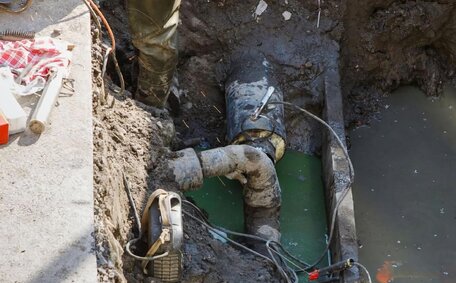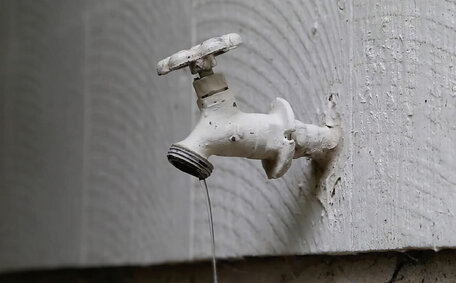Introduction to Pipe Relining
As Sydney-based specialists in pipe relining, we offer innovative solutions to conventional plumbing challenges. Quakers Hill Plumbing, a leader in trenchless pipe relining, delivers cost-effective solutions in Quakers Hill, Sydney, that are less invasive and more effective than traditional excavation and replacement methods.
Sewer pipe relining best practices involve inserting resin into a liner, which is then placed inside the damaged pipe to create a new pipe within your old one after the pipe relining process is complete. This technique restores your pipes’ integrity, enduring without the need for costly and disruptive excavation. Pipe relining emerges as a cost-saving alternative to the complete overhaul of piping sections when considering long-term financial implications.
There are numerous factors that we would recommend considering when determining how much does pipe relining cost for a project and its associated costs. Pipe relining can accommodate various pipe sizes and materials, often requiring minimal cutting to address accessibility issues. We recommend pipe relining methods that avoid digging, opting instead for innovative materials, involving minimal cutting and restoration work, as this ultimately helps create new value while minimising the overall cost over time.
This listicle can also provide an in-depth exploration of why we would recommend your sewer pipe relining as being ideal for the damaged area compared to traditional pipe replacement. It will touch on essential elements such as the sewer line size, damage variability and may only require a small amount of cutting-edge, trench-free technology, resin choices, and strategies to optimise expenditure.
The goal is to underscore why the cost pipe relining services we provide deliver sustained value and peace of mind, ensuring you can relax knowing you’ve made a prudent choice for your pipe repair needs in Quakers Hill.
Comparing Pipe Relining and Replacement Costs
When considering pipe relining, securing the best outcome for your plumbing requires comparing the cost savings to full replacement costs. Here’s a breakdown of key factors to consider in your pipe relining cost assessment:
- Labour - No need to excavate, so minimal labour costs for access.
- Materials - Only the resin liner is required, not entirely new pipes.
- Time - A typical pipe relining takes one to two days rather than weeks for replacement.
- Your Property Impact - The yard remains undisturbed, in contrast to the upheaval caused by extensive digging.
- Flow Disruption - Relining generally causes minimal flow disruption.
- Longevity - Properly applied pipe relining boasts a 50year life expectancy.
- Future Issues - Prevents the need for issues with pipe connections after initial repairs.
On average, our per metre relining costs are about 30-50% lower than traditional replacement methods. By eliminating the need to dig up gardens and driveways thus avoiding mess, tailoring the relining service to your job specifically eradicates the inconvenience and cost implications that come along.
Factors That Influence Pipe Relining Costs
Material and Diameter
The cost of pipe relining is influenced by the materials used and the diameter your pipe might have, affecting the final quote per meter. The cost to reline depends on pipe size, with smaller diameter pipes generally being less expensive per metre than larger ones, impacting overall service costs.
Relining PVC and cast iron pipes presents an economical choice, whereas concrete, galvanised steel, and clay pipes may be pricier due to added preparation or accessibility issues.
Accessibility and Location
The ease with which our plumbing team physical access can reach an access point to the inside your old pipe also influences your pipe relining job cost, often proving less expensive than traditional methods. Straight runs and pipes with strategic access points facilitate a quicker, more affordable relining process, enhancing efficiency from the outset.
We conduct thorough assessments, particularly for hard-to-reach pipes with limited entry points that can raise labour time and costs, to accurately address the issue before pricing.
Severity of Pipe Damage
- Minor issues like cracks and fissures are less costly to repair compared to pipes that require complete restoration due to significant damage.
- The degree of damage to the pipe affects the amount of liner material required, thus impacting the cost.
- Heavy encrustation, scale and rust deposits, and tree roots require preparation, indicative of pipes that need repairing or replacing, which often leads to more expensive repair costs.
- Tree root intrusion, misalignments, and collapses can complicate the ability to access damaged pipe and the relining process.
In summary, assessing the extent of pipe damage directly relates to the cost of pipe relining in terms of time and material required for repair. Severe issues tend to increase costs, but every case is evaluated carefully to ensure fair pricing.
Pipe Relining Systems and Materials
Overview of Pipe Relining Systems
There are multiple methods pipe relining utilises, each with their own unique materials, processes and costs:
- Cured-in-Place (CIPP) - uses a resin-saturated felt tube that is inverted into the damaged sewer pipe then inflated and cured with hot water or steam. CIPP is a widely used pipe relining method and can be more economical than other systems.
- Inversion Relining - Also utilises a resin-impregnated liner, but it is the air pressure and water techniques that invert it into place where it cures. More expensive than CIPP.
- Close-Fit Pipelining - Inserts a close-fitting HDPE or glass reinforced plastic (GRP) liner pipe that is glued into place with epoxy resin. Higher material costs.
- Modified Sliplining - Inserts a smaller HDPE or GRP pipe into the damaged line and seals it with resin and mechanical devices. Not suitable for major damage.
Pipe Relining Materials
The resin material used in the saturating process is a significant component of the cost your pipe relining project. Epoxy resins are the most common type used in pipe relining. Polyester and vinyl ester resins are also options but less popular due to limitations.
Epoxy resin offers:
- - Excellent adhesion and corrosion resistance.
- - Resilient against high pressures and temperatures.
- - Short cure times to minimise downtime.
- - The cost your pipe project requires ensures long-term durability.
The cost of resin, which constitutes about 50-60% of the overall project cost, depends on the resin’s thickness, the liner’s length, and the amount of material used.
Long-Term Cost Savings of Quality Pipe Relining
When it comes to maintaining the integrity of your plumbing system, Opting for high-quality materials and expert installation for pipe relining can yield substantial long-term savings over other repair or replacement options.
High-quality pipe relining using epoxy resin and CIPP liners, tailored to your pipe’s size and material, offers a durable repair extending its lifespan by 50 years or more. This method circumvents costly future repairs, Conversely, inferior or improperly applied relining may need redoing within 5-10 years.
Benefits of Quality Pipe Relining
- Our pipe relining solutions restore complete pressure capacity and flow,
- Seals leaks and prevents further corrosion
- Withstands root intrusion, ground movement, temperature fluctuations
- Adds structural strength to existing pipes
- Minimal disruption to property access and landscaping
The premium epoxy resins we use are crucial for delivering high-quality pipe relining. Our relining service, specifically our pipe drain relining, utilises 100% solids, low VOC resins that conform to industry benchmarks and bond effectively into your pipes. This ensures all our applications have maximum adhesion, corrosion resistance, and long-term stability.
Tips to Optimise Costs
Although high-quality materials and professional installation incur higher initial costs, they result in significant savings on future maintenance and repairs. However, some methods that can make pipe relining costs optimised include:
- Early leak detection to minimise damage
- Selecting the optimal liner thickness
- Using spot repairs where suitable
- Taking advantage of access points
- Combining jobs to reduce service costs
Contact us for proper maintenance like drain inspections and clearing blockages, which can extend the life of your relining investment. Ultimately, investing in premium pipe relining almost ensures cost-effective, long-lasting repairs for your pipe infrastructure.






